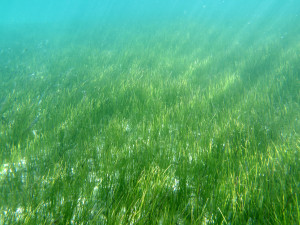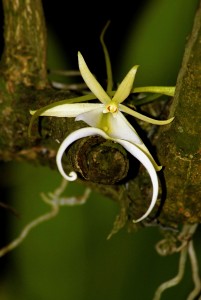 You might know that there’s a lot of seagrass around Florida and throughout the Everglades.; there’s 7 kinds of seagrass in Florida to be exact. But, did you know that this seagrass is dying? Much of the beautiful green, flowering seagrasses in the waters of the Everglades are turning brown and dying off. Last year, National Park Service researchers discovered a 40,000-acre section of seagrass in Florida Bay that is dying. Seagrass provides food and shelter for many different species for marine life, while also maintaining water quality. If this grass dies off, animals, fish, and even humans will be impacted negatively.
You might know that there’s a lot of seagrass around Florida and throughout the Everglades.; there’s 7 kinds of seagrass in Florida to be exact. But, did you know that this seagrass is dying? Much of the beautiful green, flowering seagrasses in the waters of the Everglades are turning brown and dying off. Last year, National Park Service researchers discovered a 40,000-acre section of seagrass in Florida Bay that is dying. Seagrass provides food and shelter for many different species for marine life, while also maintaining water quality. If this grass dies off, animals, fish, and even humans will be impacted negatively.
Why is the seagrass dying? There are a few reasons that attribute to the decline in this grass. Human development over the past 100 years has disrupted the natural flow of water in the Everglades. Between roads and homes, the ecosystem has been altered, which has resulted in declines in plant and animal life. Another cause of the seagrass’s decline is climate change. Climate change is causing the sea level to rise, which has increased the salinity of the water. Many droughts throughout the years have also caused stress on the seagrass.
In Florida Bay, sport fishing is popular and is a billion-dollar business, which will be disturbed if the seagrass continues to disappear.
The only way to combat this die off is through the work of restoration efforts in the Everglades to restore the natural flow of fresh water. Florida Bay, like most of the Everglades, needs fresh water to flow north to south from Lake Okeechobee to thrive and survive.
If the seagrass dies, not only will it take away a food and shelter source for many creatures, it will begin to release nutrients that will feed into algae blooms, which will take over the water and basically suffocate any remaining seagrass in the water as they have become blocked from the sunlight.
And it isn’t just the Everglades, seagrass decline is a world-wide problem. Since the late 1800s, seagrass has declined by 29 percent.
Right now, restoration efforts are being done to lift up 2.5 miles of the Tamiami Trail that is blocking the natural water flow southward. It is believed if this road is lifted, the water flow will return to its original state. This is set to be completed by 2020.
The Everglades is a delegate ecosystem; the seagrass produces oxygen and is a food and shelter source for so many livening organisms. It helps keep the water clean by trapping sediments, as well. If you’re interested in seeing this vital plant and the rest of the majestic Everglades, a great way to explore is on an airboat. Join Captain Mitch on an airboat tour! He’s been bringing people around the Everglades for decades. It’s an experience you’re sure to never forget. To book an airboat trip, click here or call 800-368-0065.
 Orchids are quite an exotic flower, so it’s no surprise that they can be found in one of the most mystical places in the world: The Everglades. Seeing these Everglades orchids is like finding beauty in an unexpected place, since the area widely known for its green and swampy colorings. According to the National Park Service, the diversity of orchids in the Everglades is higher than any other National Park in the United States.
Orchids are quite an exotic flower, so it’s no surprise that they can be found in one of the most mystical places in the world: The Everglades. Seeing these Everglades orchids is like finding beauty in an unexpected place, since the area widely known for its green and swampy colorings. According to the National Park Service, the diversity of orchids in the Everglades is higher than any other National Park in the United States.





